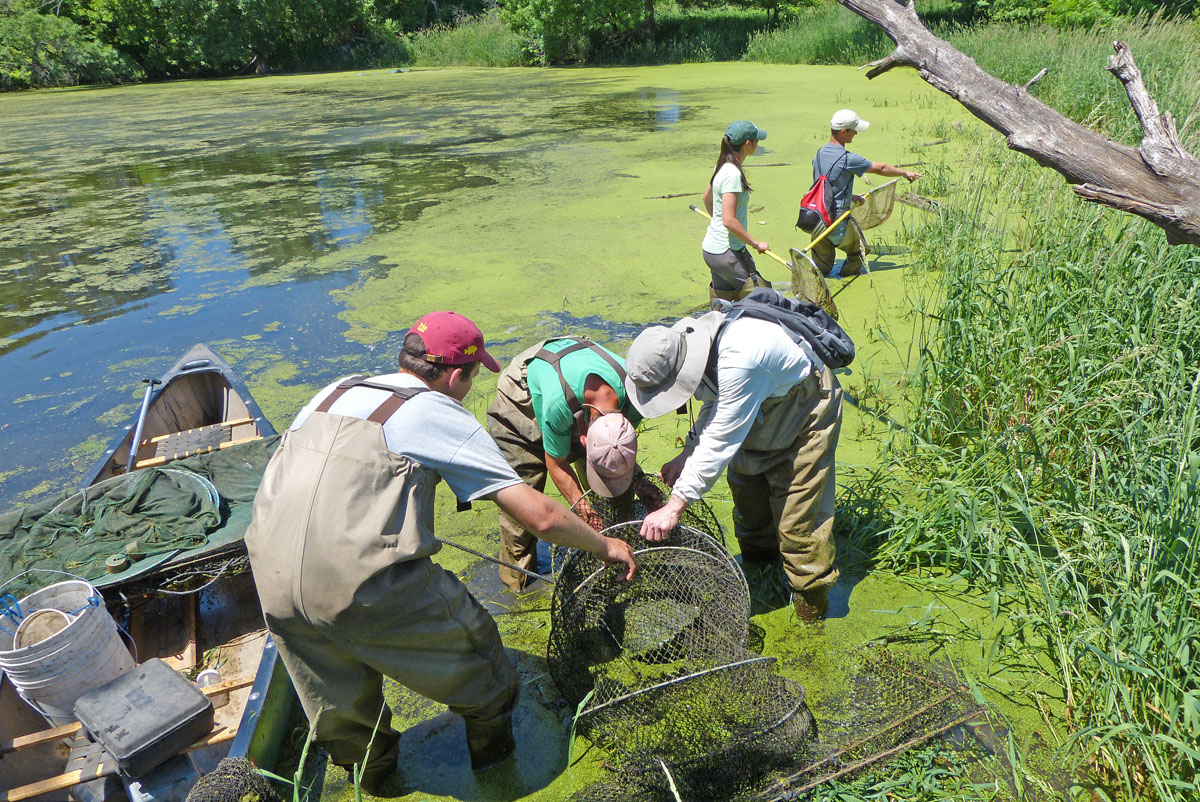Pesticide concentrations in frog tissue and wetland habitats in a landscape dominated by agriculture
Abstract/Summary
Among the multiple stressors potentially affecting the presence of amphibians across agricultural landscapes, habitat loss and exposure to pesticides are likely primary factors contributing to amphibian decline. Conservation efforts have attempted to restore wetlands lost through landscape modifications with the aim of reducing contaminant loads in surface waters and providing quality habitat to wildlife. However, the benefits of this increased wetland area, perhaps especially for amphibians, may be negated if habitat quality is insufficient to support persistent populations. We examined the presence of pesticides and nutrients in water and sediment as indicators of habitat quality and assessed the accumulation of pesticides in tissue of two native amphibian species Pseudacris maculata (chorus frogs) and Lithobates pipiens (leopard frogs) at six wetlands (3 restored and 3 reference) in Iowa, USA. Restored wetlands are positioned on the landscape to receive subsurface tile drainage water while reference wetlands receive water from overland run-off and shallow groundwater sources. Concentrations of the pesticides frequently detected in water and sediment samples were not different between wetland types. The herbicide atrazine was detected in 100% of the water samples and in some instances at concentrations high enough to potentially cause reproductive effects in leopard frogs. Nutrient concentrations were higher in the restored wetlands but lower than concentrations thought to cause lethality in frogs. Seventeen pesticides were detected in tissue samples with concentrations ranging from https://0.08 to 1,500 µg/kg wet weight. No significant differences in pesticide concentrations were observed between species, although concentrations tended to be higher in leopard frogs compared to chorus frogs, possibly because of differences in life histories. Our results provide information on habitat quality in restored wetlands that will assist state and federal agencies, landowners, and resource managers in identifying and implementing conservation and management actions for these and similar wetlands in agriculturally dominated landscapes.
Publication details
| Published Date: | 2014 |
| Outlet/Publisher: | Science of the Total Environment |
| Media Format: |
ARMI Organizational Units:
Rocky Mountains, Southern - BiologyRocky Mountains - Water
Northeast - Water
Topics:
Species and their EcologyStressors
Water
Place Names:
IowaKeywords:
agricultureamphibians
Bd
Chytridiomycosis
disease
habitat alteration
herbicides
pesticides
pond-breeding amphibians
research
stressors
water
water quality

